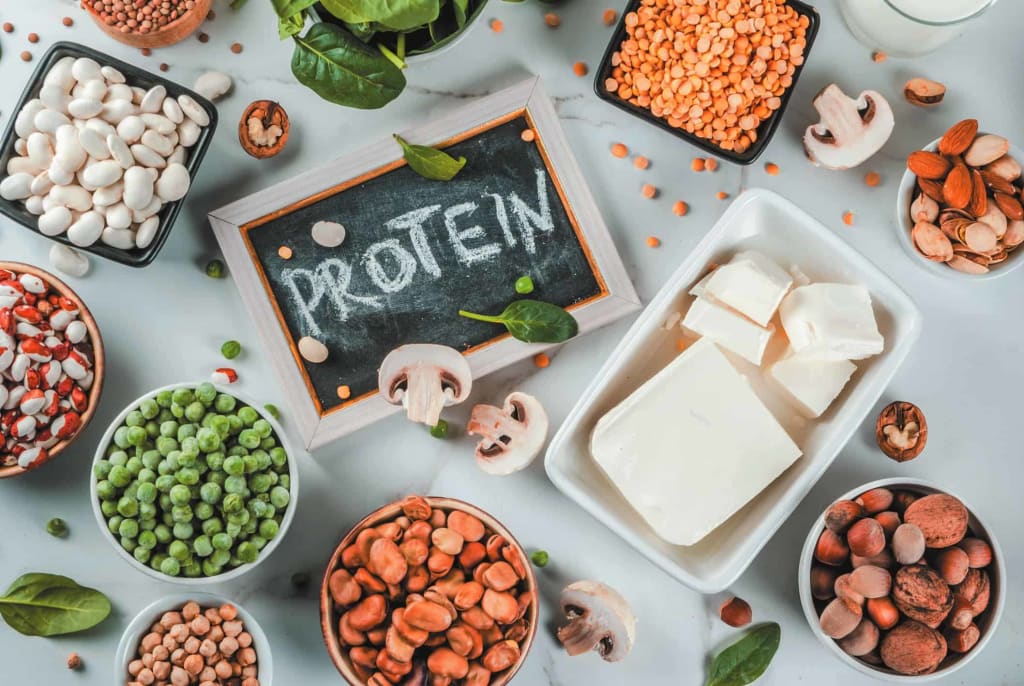The Ultimate Keto Meal Plan: What to Eat and What to Avoid
IT WAS THERE THE WHOLE TIME!

The ketogenic diet has been gaining a lot of popularity in recent years due to its many health benefits. It's a low-carb, high-fat diet that can help you lose weight, reduce your risk of chronic diseases, and even improve your mental focus and clarity. However, starting and following the keto diet can be difficult, especially if you're not sure what to eat or what to avoid. That's why we've put together the ultimate keto meal plan for you - so that you can get started on the right track and make the most of your ketogenic lifestyle.
What is the keto diet?
The keto diet, also known as the ketogenic diet, is a low-carb, high-fat eating plan that focuses on replacing carbs with healthy fats. The goal of the keto diet is to put your body into a state of ketosis, in which it produces and uses ketones as its primary fuel source instead of carbs. By limiting carbs and increasing fat consumption, the body is able to switch from burning glucose (sugar) to burning stored fat.
When following the keto diet, you should aim to eat approximately 75% of your calories from fat, 20% from protein, and 5% from carbohydrates. The types of foods you should focus on include fatty cuts of meat, full-fat dairy products, non-starchy vegetables, eggs, nuts, seeds, avocados, olives, and other healthy fats. It’s important to avoid processed foods and sugary snacks when following the keto diet.
How to start the keto diet
Starting a keto diet is simple, but there are some things you need to know before beginning.
1. Get familiar with the basic principles of the diet. The ketogenic diet is a low-carbohydrate, high-fat way of eating that forces your body to use fat as fuel instead of carbs. By drastically reducing your intake of carbohydrates, you force your body to switch from burning sugar (glucose) for energy to burning stored fat for energy. This process is known as “ketosis” and is what gives the diet its name.
2. Calculate your macros. Once you understand the basics of the diet, it’s time to figure out your specific macros. Your macros are the proportions of fat, protein, and carbohydrates you will be eating each day. Generally, on a keto diet, you should be eating 5-10% of calories from carbs, 20-25% from protein, and 70-75% from fat. To calculate your specific macros, you can use an online macro calculator.
3. Stock up on keto friendly foods. Before starting the diet, make sure to stock up on foods that are keto-friendly. Foods like eggs, fatty fish, nuts and seeds, avocados, and leafy greens are all great choices for the keto diet. You’ll also want to pick up some healthy fats like olive oil, coconut oil, and butter or ghee. Finally, don’t forget to get plenty of low-carb vegetables like broccoli, cauliflower, zucchini, and asparagus.
4. Prepare meals in advance. Meal prepping is essential for success on the keto diet because it will help you stay on track and make sure you always have healthy meals available. Try to prepare meals for at least a few days in advance so you don’t have to worry about what you’re going to eat each day.
5. Track your progress. Tracking your progress is also important when starting a keto diet because it will help you stay motivated and monitor your progress. You can track your progress by measuring your weight and body fat percentage or taking note of how you feel each day.
With these steps in mind, you’re ready to start the keto diet!
Foods to eat on the keto diet
When following the keto diet, it is important to focus on low-carb and high-fat foods. Many of these are the same as you would find in a traditional healthy diet, but with the focus on lower carb intake. Here are some of the best foods to eat on the keto diet:
1. Meat and fish: Fatty cuts of meat and fish are a great source of protein and fat. Look for grass-fed beef, pork, chicken, salmon, tuna, trout, and other fatty fish.
2. Eggs: Eggs are a great source of protein and fat. Look for omega-3 enriched or pastured eggs.
3. Nuts and seeds: These are a great snack option that are high in healthy fats. Choose unsalted nuts like almonds, walnuts, pecans, macadamia nuts, etc. and unsalted seeds such as chia, flax, sunflower, pumpkin, sesame, etc.
4. Dairy products: High-fat dairy products such as heavy cream, cheese, butter, full-fat yogurt, sour cream are all great options.
5. Low-carb vegetables: Leafy greens such as spinach, kale, Swiss chard, lettuce, and collard greens are great choices. Root vegetables such as radishes, turnips, rutabagas, celery root, and onions are also good choices. Cruciferous veggies such as broccoli, cauliflower, Brussels sprouts, and cabbage are all excellent choices.
6. Healthy oils: Olive oil and coconut oil are great sources of healthy fats for cooking and baking.
7. Avocado: Avocado is high in healthy fats and can be added to salads or used as a spread.
8. Berries: Berries are low in carbs and can be enjoyed as a snack or added to smoothies or desserts.
9. Dark chocolate: Dark chocolate is high in antioxidants and has a low amount of sugar when compared to milk chocolate.
These are just some of the foods to eat on the keto diet. Eating a variety of nutrient-dense whole foods can help you meet your nutrition needs while staying in ketosis.
Foods to avoid on the keto diet
The most important thing to remember when you’re following the keto diet is to limit your intake of carbohydrates. You should avoid or limit these foods:
Grains – Avoid all grains, including wheat, barley, oats, corn, quinoa, and brown rice.
Fruits – Fruits are typically high in sugar and carbs, so they should be avoided. This includes apples, oranges, pears, bananas, and grapes.
Starchy vegetables – Avoid starchy vegetables such as potatoes, sweet potatoes, parsnips, and squash.
Legumes – Stay away from beans, peas, lentils, and peanuts as they contain a high amount of carbs.
Dairy – Dairy products are generally high in carbs, so it’s best to avoid milk, yogurt, cheese, and other dairy products.
Sugary foods – All types of sugary foods should be avoided. This includes cake, candy, ice cream, and cookies.
Alcohol – Alcohol contains empty calories and carbs, so it should be avoided on the keto diet.
It’s important to remember that the keto diet is a very strict diet and you must limit or avoid many foods that contain carbs. However, with a little bit of planning and discipline, you can still enjoy delicious meals without compromising your keto diet goals.
Sample meal plan
-Scrambled eggs with spinach, cheese and tomatoes
-Keto-friendly smoothie made with almond milk, avocado, coconut oil, and chia seeds
-Salad made with romaine lettuce, cucumber, bell pepper, chicken, bacon, and avocado
-Cauliflower crust pizza with pepperoni and mozzarella cheese
-Low-carbohydrate yogurt with sliced almonds and berries
-Celery sticks topped with cream cheese and smoked salmon
-Grilled salmon with roasted broccoli, cauliflower, and zucchini
-Slow cooker chicken stew with mushrooms and spinach
-Keto-friendly cookies made with almond flour and dark chocolate chips
-Sugar-free cheesecake made with cream cheese and stevia
Tips for success on the keto diet
1. Get familiar with the foods that are allowed on the keto diet. Knowing what you can and can’t eat will make the transition easier. You can use online resources to research what types of food fit into the keto diet.
2. Start slow. Going from a regular diet to the keto diet overnight can be overwhelming. Take it one step at a time by slowly reducing your carbs and replacing them with healthy fats and proteins.
3. Find recipes. There are hundreds of delicious keto recipes available online. Find a few that you like and use them as your go-to meals. This will make meal planning easier and more enjoyable.
4. Track your progress. Keeping track of how you’re doing on the keto diet is important for staying motivated and for making sure you’re getting the desired results. You can use an app or online tracker to monitor your carb intake and weight loss.
5. Stay hydrated. Staying hydrated on the keto diet is essential for success. Make sure you’re drinking plenty of water and unsweetened beverages throughout the day.
6. Be patient. Results won’t happen overnight when following the keto diet. It’s important to stay consistent and not give up if you don’t see results right away.
Now you too can master the tried & tested tricks to achieve a successful keto diet, Explore now.
About the Creator
Enjoyed the story? Support the Creator.
Subscribe for free to receive all their stories in your feed. You could also pledge your support or give them a one-off tip, letting them know you appreciate their work.





Comments
There are no comments for this story
Be the first to respond and start the conversation.